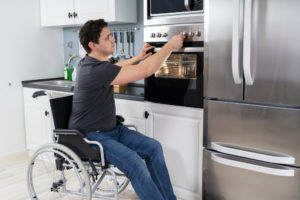Emergency home repairs are usually disruptive and costly. Common home emergencies include burst pipes, leaking roofs, broken or malfunctioning water heaters or air conditioners, and fallen trees that strike the house.
These problems almost always require urgent service, but paying a plumber, roofer, HVAC technician, or arborist to come out and address an emergency can cost thousands for new equipment and labor charges. Homeowners who don’t have a deep war chest of cash may be hard-pressed to pay for emergency fall home repairs.
Here are five ways homeowners can fund emergency home repairs during escalating labor and materials costs.
Home Ownership Can Come with a High Price Tag
Mortgage rates aren’t the only thing that’s on the rise in our inflation-driven economy. The cost of an emergency home repair can quickly deplete a healthy savings account.
Here are some average costs for five common emergency home repairs:
Home Repair Costs
Costs for these emergency repairs could skyrocket depending on the job’s complexity or whether it requires after-hours or weekend work.
Fall is often a good time to tackle home repairs before they become emergencies. If you know your water heater or air conditioning unit is headed to the grave, you might be able to find a good deal on replacement equipment since you aren’t in the peak summer season.
It’s always prudent to tackle these jobs before they become problems. You don’t want to be left without AC during an Indian summer or have no heat in the dead of winter. Early fall is also peak hurricane season in the Atlantic. The first hurricanes typically form in mid-August through September, while major hurricanes often hit in late October.
Homeowners in coastal regions who have endured October hurricanes such as Delta (2020), Michael (2018), Matthew (2016), Sandy (2012), and Mitch (1998) know first-hand how costly and onerous home repairs can be in the wake of a devastating fall storm.
Home Insurance Deductibles
Deductibles for hurricane insurance policies vary, but they usually range between 1% and 5% of the insured value of the home. If your home is insured for $250,000 at 5%, your hurricane insurance deductible would be $12,500. If your home is worth $1 million, your deductible could run between $10,000 and $50,000.
In some cases, paying for repairs out of pocket may be more financially prudent than filing an insurance claim, especially when insurers are overwhelmed with thousands of claims following a major storm. Let’s look at some common ways homeowners can fund emergency home repairs.
Shop for Home Repair Financial Solutions
Browse our curated list of personal loans for home repairs to find the best rates and lowest fees you qualify for.
4 Financial Solutions for Emergency Home Repairs This Fall
Dealing with an emergency home repair can be highly stressful, mainly if the problem occurs at night, on weekends, or after regular business hours. The last thing homeowners need when trying to strategize their repair is the additional worry about how to pay for it.
Here are some ways homeowners can quickly fund emergency repairs if they don’t have enough cash to cover the labor and materials expenses.
Personal Loan
For creditworthy borrowers, personal loans offer unmatched flexibility to fund any type of emergency repair. Approval is usually a simple and straightforward process that doesn’t require any collateral to secure the loan, and funds can be delivered straight to your checking account in as little as one to two days.
Credit unions, online and traditional banks, and even credit card companies offer personal loans. Borrowers with good (670-739), very good (740-799), and exceptional (800+) credit scores will receive the most favorable loan terms. Interest rates for personal loans average about 12.3 – high, but much better than most credit cards.
The most creditworthy borrowers will likely receive personal loan offers with interest rates under 10%. In contrast, borrowers with fair (580-669) to poor (300-579) credit will likely get personal loan offers with interest rates between 18% and 32%. Additional factors that could impact loan terms include your overall income, debt-to-income ratio, loan amount, and employment history.
You can use home improvement personal loans in just about any way you want. You could borrow just enough money to purchase and install a new water heater or air conditioner. Alternatively, you could take out additional funds (provided you qualify) and upgrade your bathroom vanity and countertops or install new gutters. Another benefit is that loan terms won’t change – you’ll have the same monthly payment until the loan matures. A potential drawback, however, is that you could borrow more than you truly need and saddle yourself with a hefty loan payment.
Pros and Cons of Personal Loans
While personal loans can provide quick access to the funds needed to address urgent repairs, they also come with certain advantages and drawbacks.
Understanding the pros and cons of using a personal loan for emergency home repairs can help you make an informed decision that best suits your financial situation and needs.
Pros
- Quick Access to Funds: Personal loans can be approved and disbursed quickly, which is crucial when dealing with emergency home repairs.
- No Collateral Required: Most personal loans are unsecured, meaning you don’t have to put your home or other assets at risk.
- Fixed Interest Rates: Personal loans often have fixed interest rates, which provide predictable monthly payments and can help with budgeting.
- Flexible Use of Funds: Unlike some other types of loans, personal loans can be used for virtually any purpose, including a wide range of home repairs.
- Improves Home Value: Using a personal loan for repairs can enhance the value of your home, potentially leading to a higher resale value in the future.
Cons
- Higher Interest Rates: Some personal loans have higher interest rates compared to secured loans like home equity loans or lines of credit.
- Potential Fees: Some personal loans have origination fees, which can increase the overall cost.
- Impact on Credit Score: Taking out a personal loan will affect your credit score, and missing payments could negatively impact your credit.
- Shorter Repayment Period: Personal loans often have shorter repayment periods compared to other types of home loans, leading to higher monthly payments.
- Debt Accumulation: Using a personal loan for emergency repairs adds to your overall debt, which could be challenging to manage, especially if you face other financial obligations.
Getting matched to your personalized home repair loan solution is fast and easy. Get started and see your rate.
Credit Card
Using a credit card to pay for an emergency home repair this fall can help you avoid a difficult situation while placing you in another. You’ll solve the problem of a faulty furnace but increase your high-interest debt.
Credit card companies also regularly report credit usage to the three major credit-reporting agencies (Equifax, Experian, and TransUnion), and even modest usage of your credit can negatively impact your credit score.
Credit cards are also expensive, with interest rates averaging nearly 25%. If you can only afford minimum payments, you could end up paying three to four times the cost of your repair due to steep interest charges.
Pros and Cons of Credit Cards
Credit cards offer the flexibility to cover unexpected expenses quickly, but they also come with their own set of advantages and potential pitfalls.
Before relying on a credit card to finance emergency home repairs, weigh the pros and cons to ensure you’re making the best choice for your financial health and long-term goals.
Pros
- Immediate Access to Funds: Credit cards offer instant access to funds, allowing you to pay for emergency repairs as soon as they are needed.
- No Need for a New Loan: If you already have a credit card, you won’t need to apply for a new loan, saving time and avoiding additional paperwork.
- Reward Points or Cashback: Many credit cards offer rewards, such as points or cashback, which can provide some financial return on your spending.
- Flexible Repayment Options: Credit cards typically allow you to make as little as the minimum payment each month, offering flexibility in repayment management.
- Introductory 0% APR Offers: Some credit cards come with introductory 0% APR offers, allowing you to finance your repairs without paying interest for a certain period.
Cons
- High Interest Rates: Credit cards usually have higher interest rates than other forms of financing, which can make borrowing expensive if the balance is not paid off quickly.
- Risk of Accruing Debt: It’s easy to accumulate debt quickly with credit cards, especially if you only make minimum payments, leading to a longer repayment period and higher overall costs.
- Credit Utilization Impact: Using a significant portion of your credit limit for home repairs can negatively affect your credit score by increasing your credit utilization ratio.
- Limited Credit Availability: Depending on your credit limit, a credit card may not provide sufficient funds to cover major or extensive home repairs.
- Potential for Additional Fees: Late payments, cash advances, and exceeding your credit limit can result in additional fees, further increasing the cost of using a credit card.
Home Equity Loan or HELOC
Your home is one of your most valuable assets. You can tap into the equity in your home to fund emergency repairs, though receiving funds won’t happen as quickly as with personal loans or credit cards.
In a pinch, you could choose one of those options and clear that debt with cash from a home equity loan or line of credit.
The former works just like your original mortgage. You’ll get a fixed rate over a set term. HELOCs, meanwhile, are a line of credit you can draw upon to fund repairs. You’ll have a set period to access the credit, and once that window closes, you’ll begin making regular loan payments. Since your home is used as collateral, both forms of borrowing offer much more favorable interest rates.
Pros and Cons of Home Equity Loans and HELOCs
Pros
- Lower Interest Rates: Home equity loans and HELOCs typically offer lower interest rates compared to personal loans or credit cards because they are secured by your home.
- Larger Loan Amounts: A home equity loan or HELOC allows you to potentially borrow larger amounts, making it suitable for more extensive or costly repairs.
- Tax Deductibility: In some cases, the interest paid on a home equity loan or HELOC may be tax-deductible if the funds are used for home improvements, providing a financial benefit.
- Fixed Interest Rates (Home Equity Loan): Home equity loans often have fixed interest rates, providing consistent monthly payments that can help with budgeting.
- Flexible Access to Funds (HELOC): A HELOC works like a revolving line of credit, allowing you to borrow only what you need when you need it and make payments based on the amount borrowed.
Cons
- Risk of Foreclosure: Since these loans are secured by your home, failing to make payments could result in losing your property to foreclosure.
- Longer Approval Process: Obtaining a home equity loan or HELOC can involve a more lengthy and complex approval process compared to other financing options, which might be a disadvantage in an emergency.
- Variable Interest Rates (HELOC): HELOCs often come with variable interest rates, meaning your payments could increase over time, making budgeting more difficult.
- Closing Costs and Fees: Home equity loans and HELOCs often have closing costs, appraisal fees, and other charges that can add to the overall expense.
- Reduced Home Equity: Using a home equity loan or HELOC reduces the equity in your home, which could impact your ability to sell the property or borrow against it in the future.
Cash-out Refinance
With a cash-out refinance, you cash out the equity in your home and get a new mortgage. However, in today’s high-interest-rate environment, replacing a mortgage loan under 5% with one hovering around 7.6% is impossible.
Pros and Cons of Cash-out Refinances
A cash-out refinance allows homeowners to tap into their home equity by refinancing their mortgage for more than what they currently owe and taking the difference in cash.
This option can provide a substantial amount of funds for emergency home repairs. However, while a cash-out refinance can be an effective way to finance urgent repairs, it’s important to weigh the benefits and potential drawbacks, especially considering current market conditions.
Pros
- Access to Significant Funds: A cash-out refinance can provide a large sum of money, making it suitable for major repairs or renovations that require substantial investment.
- Potentially Lower Interest Rate: If current mortgage rates are lower than what you’re paying on your existing mortgage, a cash-out refinance could reduce your overall interest rate.
- Consolidation of Debt: This option allows you to consolidate your mortgage and the cost of repairs into a single loan, simplifying your financial obligations.
- Tax Deductibility: The interest on the portion of the refinance used for home repairs may be tax-deductible, similar to home equity loans or HELOCs.
- Fixed Monthly Payments: If you choose a fixed-rate mortgage, your monthly payments will remain consistent, aiding in budget planning.
Cons
- Higher Interest Rates: If your current mortgage is over two years old, refinancing could result in a higher interest rate, especially if you initially secured a lower rate.
- Extended Loan Term: A cash-out refinance typically extends the term of your mortgage, meaning you’ll be paying off your home for a longer period, which could increase the total interest paid over time.
- Closing Costs: Like the original mortgage, a cash-out refinance comes with closing costs, including appraisal fees, which can be substantial.
- Risk of Foreclosure: Since your home is the collateral for the new loan, failing to make payments could result in losing your home.
- Reduced Equity: Taking cash out of your home reduces the equity you have built up, which could limit future financial options or affect the proceeds if you decide to sell your home.
The Bottom Line
Perhaps the best way to fund an emergency home repair is to create an emergency fund because you won’t have to take on any additional debt.
If setting aside a few thousand dollars isn’t in your budget, you can fall back on Ben Franklin’s old motto: “An ounce of prevention is worth a pound of cure.”
Routine maintenance on your AC unit, furnace, water heater, and other major home systems greatly extends their longevity and helps prevent costly repairs.
Nothing lasts forever, though, and countless homeowners will, at some point, find themselves in a pinch following a significant storm or when the furnace goes on the fritz. Your method of paying for any emergency repairs this fall depends on your financial situation, credit score, and ability to access the equity in your home.













